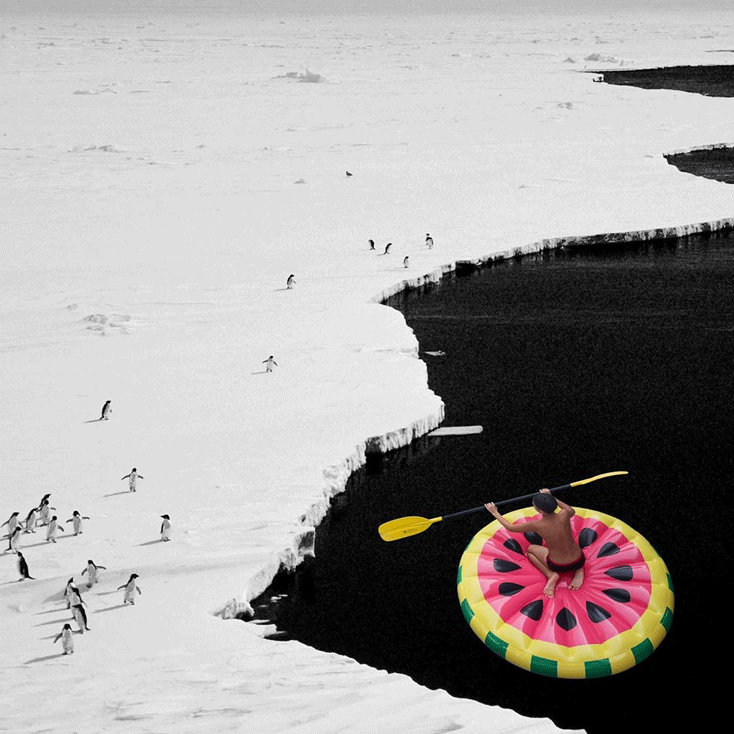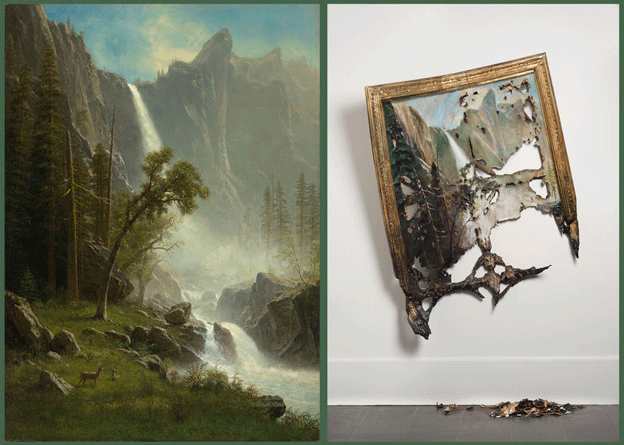Facing down a gargantuan load of alarming statistics and increasingly urgent scientific predictions, it seems art has no place in divining solutions. The climate crisis is no longer a distant worry on the horizon but is now unfolding before our eyes, bringing unprecedented floods, fires, and natural disasters. Governments and global organizations have begun crucial steps towards fixing the damage, but face endless opposition and setbacks. However, society may be overlooking a critical method of supplementing their efforts: art.
Art is not going to stop climate change alone. Instead, it is a vital but overlooked part of the solution. Historically, art served as a cultural staple of the wealthy, and often reflected the status quo. Contemporary art, specifically the art of the last century, redirected the purpose of art, and creators used their work to push boundaries and question authority, both artistically and politically. This mindset expanded, and artists started seeing their work as spaces of discussion and thought, often regarding difficult and controversial topics.
Art supplements the climate change efforts in two main ways; The first is setting the basis for conversation. Galleries, shows, and museums aim to provide individual emotional experiences that push forward imaginative realities and pose specific perspectives on the world. Within these experiences, the solution-oriented approach of many organizations is temporarily suspended. Art invites creativity and innovation and often evokes a desire to influence and improve the outside world.
Climate-related art often introduces a shock factor, spurring dialogue around the artistic intention and a more meaningful message. The shock factor ranges from over-simplified compositions to graphic and visceral images. Conversations made in these spaces take on a different personality than those in government and scientific circles, instead leaning towards abstraction and philosophy. While these discussions alone cannot be the only change, the "big picture" approach is necessary to address the societal effects of the climate crisis. Art analysis pushes consideration of broader themes and examination of humanity, ideological dialogue necessary to the fight of convincing the world that climate change is undeniable and a priority.

The second overlooked benefit of art touches on the core aim of art—a visual representation of time, image, or concept. While statistics and expert opinions mount a sense of looming dread, it is difficult to imagine these large scale dangers into pictures of everyday life. Individually, these changes play out in different magnitudes, and if personal conceptions of the climate crisis are reliant only on numbers, it can be difficult to convince those unaffected that the issue is much closer than anticipated. Low income communities especially are disproportionately affected by unpredictable weather and unprecedented natural disasters. Artistic depictions and conceptual art can compellingly illustrate these effects and aids the ideological battle against climate change.
Take, for instance, "Nature's Nation: American Art and Environment," a collection of paintings, sculptures, prints, drawings, photographs, videos, and decorative art that premiered at Princeton University in 2018. The works range from a variety of periods and explore the depictions of environmental change over time. One standout moment from the exhibition is Albert Bierdstadt's majestic North American landscape juxtaposed next to Valerie Hegarty's Fallen Bierstadt, the same image but with the canvas and its landscape burned and ravaged. The result is a clear understanding of ecological change: what was once revered as the vast wilderness is under attack.

Art is vital to the ideological battle against climate change. With many still denying the reality of the environment, or merely downplaying the urgency, creating productive conversation and representation is necessary. Historically, art reflects societal values and consciousness of its time, and as climate-related creative projects gain affixed space, the issue itself becomes a higher priority. As an arts-based organization, Arts Help aims to give a platform to artistic voices prioritizing climate change issues and acknowledge the role of art in global activism.
